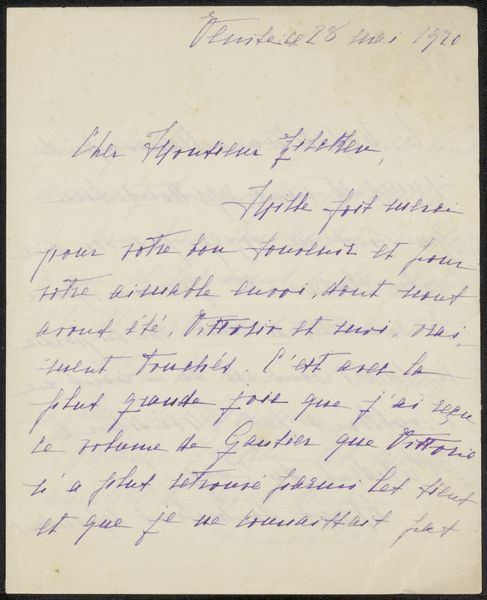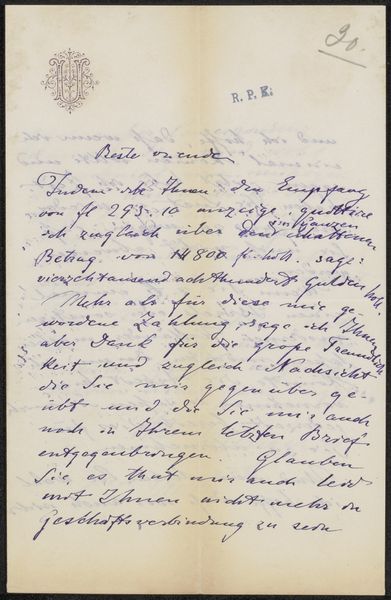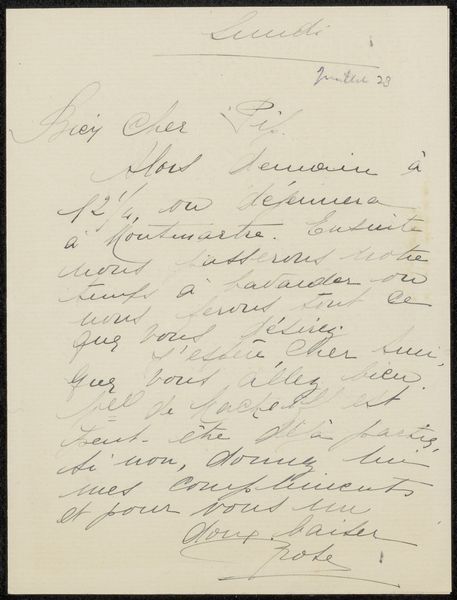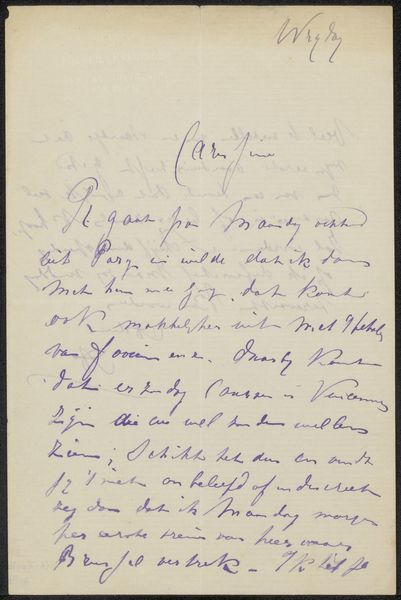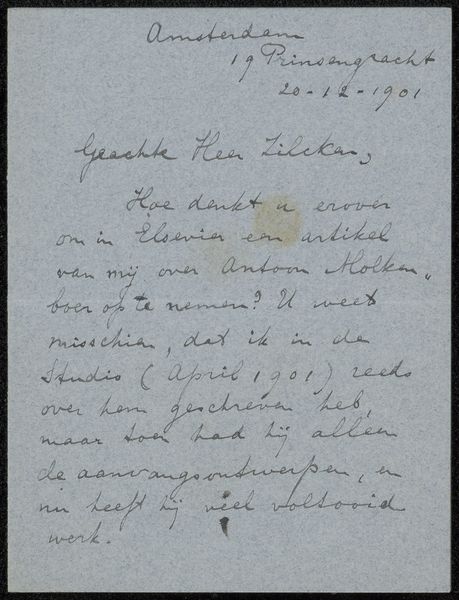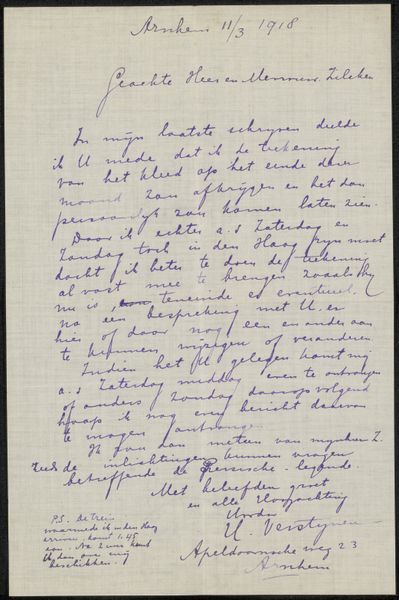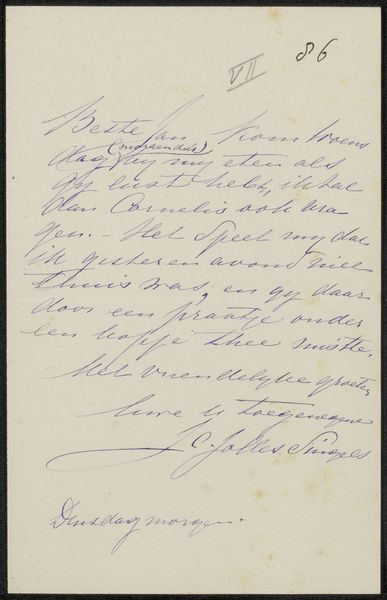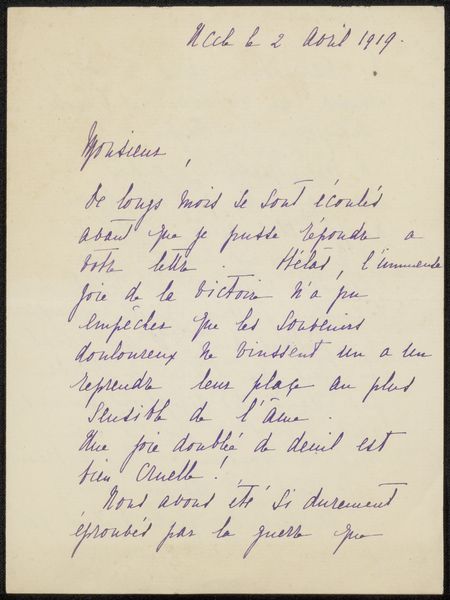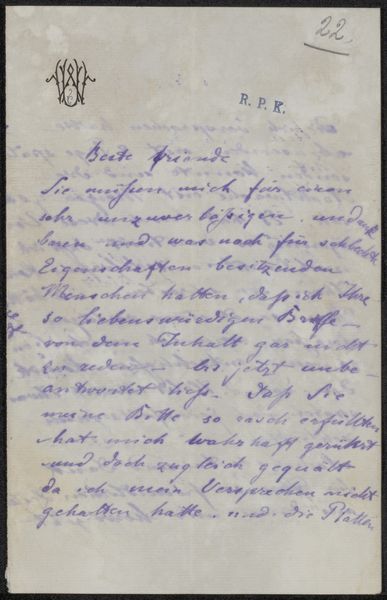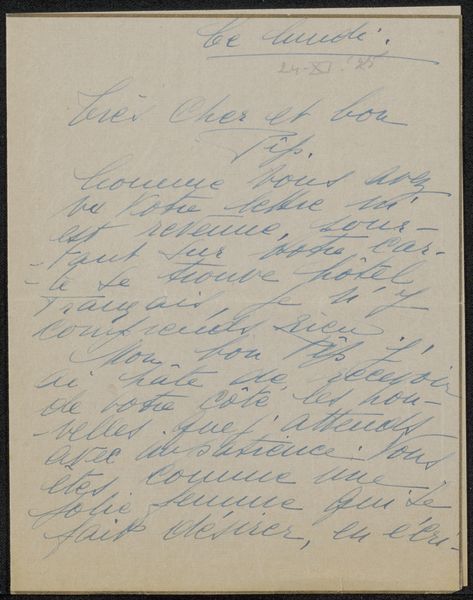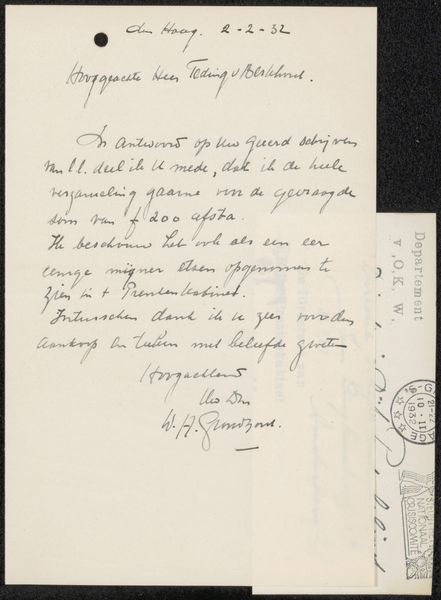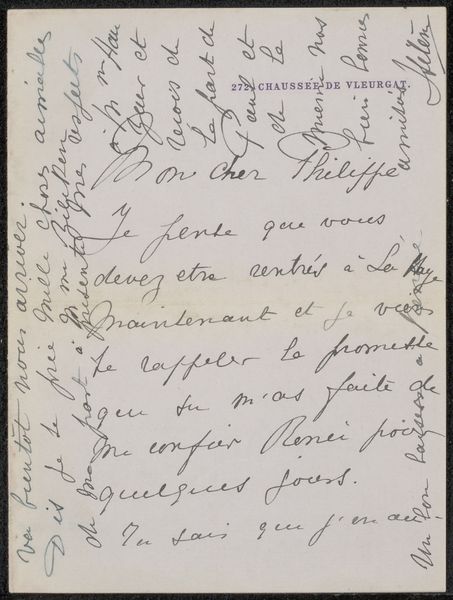
drawing, ink, pen
#
drawing
#
hand-lettering
#
narrative-art
#
pen sketch
#
hand drawn type
#
hand lettering
#
personal sketchbook
#
ink
#
hand drawn
#
pen-ink sketch
#
pen work
#
sketchbook drawing
#
pen
#
sketchbook art
#
modernism
Copyright: Rijks Museum: Open Domain
Curator: We're looking at a pen and ink drawing entitled "Brief aan Philip Zilcken," potentially from 1919. What’s your immediate take? Editor: Intimate. There’s an undeniable fragility in the script, a personal touch heightened by the pale paper—almost like glimpsing someone’s private correspondence. I'm drawn to the immediacy of the mark making. Curator: I concur; that delicate yet deliberate script is essential. Observe how the linework's varying weights construct a sense of hierarchy and spatial relationships, especially within the limited page. The controlled hand reflects both clarity and purpose. Editor: Indeed. And consider the material circumstances. The very act of handwriting a letter, with pen and ink, rather than using a typewriter… the time it takes. The hand-lettering lends a weight that a modern typed version wouldn’t possess. Note also the censor's stamp on the paper, "Regia Posta Esterra," likely indicative of the wartime realities shaping both the sender and recipient. Curator: The modernist aesthetic is also undeniable here. It is far removed from earlier approaches to textual presentation—this isn't about illumination, but pure information architecture. Its inherent structural components create a very deliberate, minimal construction on this flat plane. Editor: The act of creation is interesting because the materiality speaks to restrictions on the maker. What materials were available, were these drawings made for display? What access to resources or free movement did the artist have at the time of writing? Curator: You’re bringing in important dimensions here. The lack of embellishment directs one's focus solely towards its textual components. The emphasis is now less ornamental. It's purely structured communication through formal elements. Editor: And one that suggests not only scarcity but maybe urgency and a direct link between making and communicating, a very compelling example of a synthesis of expression and pragmatic utility in its historical time. The way this was done makes you consider labor, time and movement that digital methods obfuscate. Curator: Agreed; this closer view underscores that. Thank you for elucidating new contexts that augment one’s awareness of the maker’s circumstance. Editor: Of course, by looking at the materiality, it sheds new light and raises essential inquiries—not merely around aesthetics but the making and dissemination process too.
Comments
No comments
Be the first to comment and join the conversation on the ultimate creative platform.
